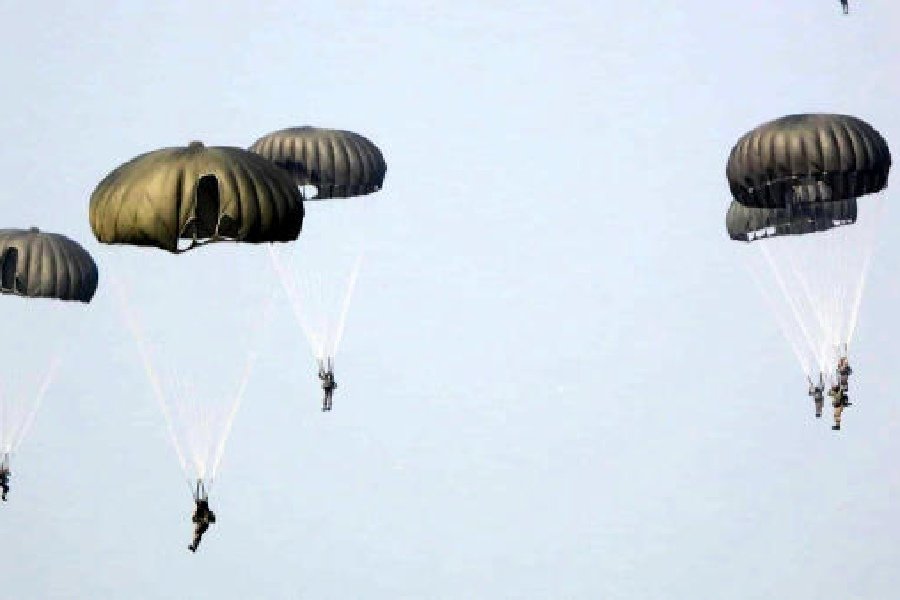Exercise held between January 22 and 27, was planned to practise entire spectrum of operations carried out by airborne force
Avijit Sinha, Siliguri: The Indian army held an “Exercise Devil Strike,” a large-scale air exercise in north Bengal last week.
According to army sources, the exercise, held between January 22 and 27, was planned to practise the entire spectrum of operations carried out by an airborne force. They included aerial induction of troops, destruction of high-value targets, successful link-ups with advancing ground forces and exfiltration operations.
During the six-day-long exercise, more than 1,000 paratroopers from the Eastern Command and Garud commandos of the Indian Air Force (IAF) took part. They were supported by aircraft such as Rafale, C-130 Hercules, AN-32 and advanced light helicopters of both the IAF and the army. “The exercise showcased integrated employment of latest weapons & equipment in a networked battlefield under intense Electronic Warfare environment & Indian Armed Forces’ capability to employ an airborne force swiftly in a dynamic situation,” said a post on the official X handle of the Eastern Command.
During the exercise, troops carried out drills to destroy and neutralise targets by direct action. Fighter aircraft and attack helicopters destroyed targets designated through laser target designators by the paratroopers on the ground. “The post-strike damage assessment was carried out by Remotely Piloted Vehicles (RPAs) and re-engagement done wherever necessary,” said a source.
On successful completion of the mission, the paratroopers linked up with the ground forces for exfiltration drills. Underwater diving teams conducted a diversionary attack drill near the Teesta Barrage.
Over the past couple of years, the defence forces have been organising several such exercises in north Bengal, a region known as the Siliguri Corridor or the Chicken’s Neck, being the slimmest part of the Indian sub-continent.
In August last year, the troops of the IAF and the army carried out a joint exercise, including helocast training —a technique through which small units or teams of personnel literally dive into action. The troops jumped from choppers to the water in high-altitude areas of Sikkim that sits on the India-China border.
The Indian navy had also participated in a combat underwater diving exercise in extreme weather conditions in the same region. In January last year, the army conducted a joint training exercise named Trishakti Prahar in this strategic
region. “It was carried out to rehearse the coordination among various agencies for quick movement and deployment of forces across north Bengal,” a source had said.
In October 2022 another tactical exercise named Singhee Prahaar was organised at a height of 17,500 feet in north Sikkim to showcase the prowess of the defence forces in integrated operations, said sources.

